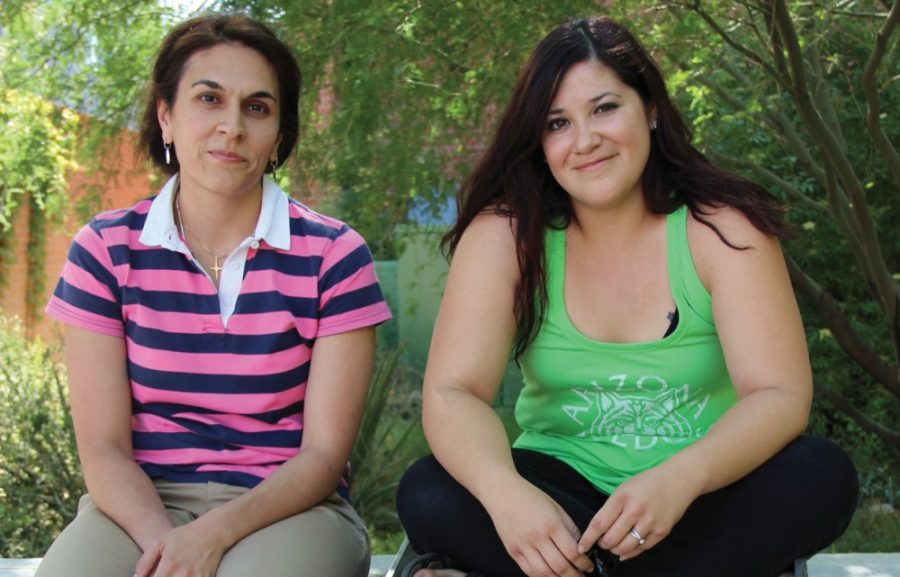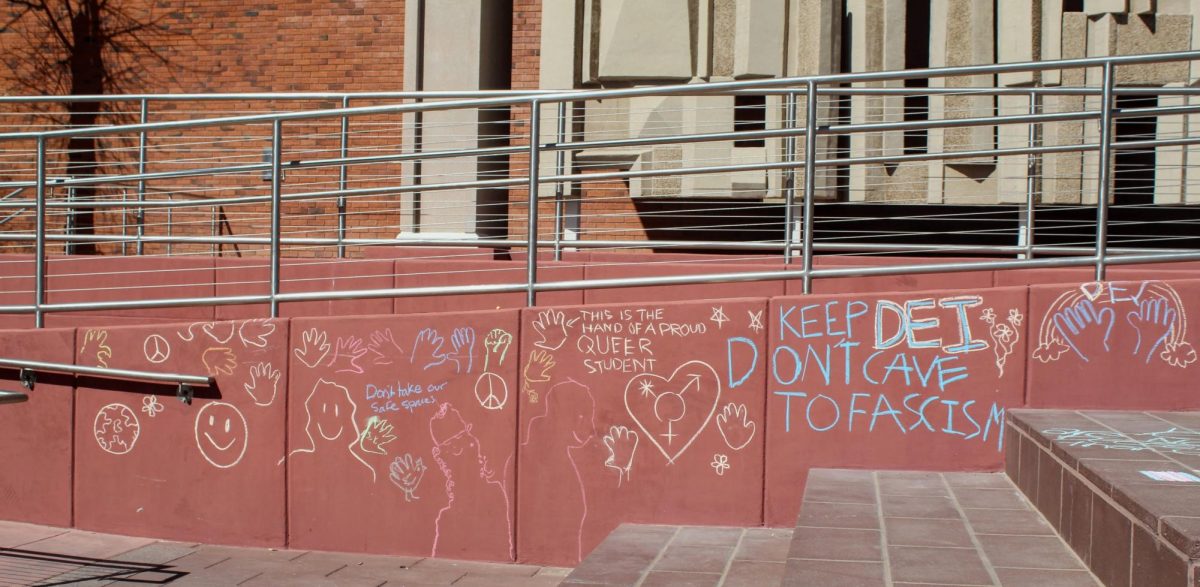Two UA graduate students have designed a stormwater harvesting system that won an award in the Environmental Protection Agency’s first Campus RainWorks Challenge.
Rayka Robrecht and Micaela Machado, both landscape architecture graduate students, were tasked with designing a green space to replace the parking lot just south of the Architecture building.
Awarded second place in the nationwide challenge, their design takes advantage of rainwater as well as water that condenses due to air-conditioner use.
They got second place in the nationwide challenge, despite being the smallest team competing.
“The other teams had such amazing designs and wonderful solutions. We’re so happy to have been selected among them,” Robrecht said. “It’s really humbling.”
The system is designed to use stormwater for plants, as well as collect the water that runs off the roofs of the surrounding buildings in underground cisterns for later use. The design started as a semester-long project for a course taught by Ron Stoltz, a professor of landscape architecture.
“It was really an inspired design,” Stoltz said.
He described the different “layers” of the design that work together to create a “high-performance landscape.”
“It will be really charming and comfortable, while at the same time addressing a lot of water sustainability issues,” Stoltz said.
The design takes a spiral shape, drawing inspiration from forms like the spines of an agave, ancient petroglyphs and the storm patterns of the Tucson area during the monsoon. Stormwater is funneled toward the center of the spiraling basin, feeding various plants and trees along the way.
The system will save almost 2 million gallons of water annually, according to the team’s analysis. One million will come from rainwater while the other million will come from air-conditioning condensate on, which is the water that condenses on the many HVAC units around campus. The water usually runs off and into the sewer, but with this design the condensate from the surrounding buildings would be conserved.
Along with conserving water and providing a comfortable space on campus, the area would also serve as an educational site, raising awareness for sustainability-related issues and practices. The central feature of the design includes a window that shows the collected water in a chamber below.
“When you see that happen, it’s a celebration of water,” Machado said. “It’s a celebration of life in the desert.”
Although the award-winning design is not a budgeted project, it will likely influence the design of a future green space that will eventually be constructed at the site, said Bob Smith, vice president of business affairs.
Robrecht said she would be ecstatic if the design ended up being implemented.
“It would be great to see that we created a space that people can really use,” Robrecht said. “Students can come out and sit under the shade of a tree and hang out or have a snack. I really look forward to that.”









